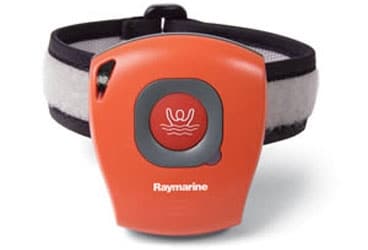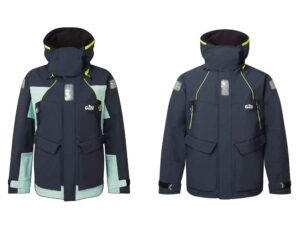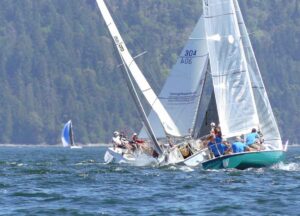
GULifeTagSt
Delivering a raceboat to or from an event can be a great way to get some time on the water. Plus, if you’re a member of the racing crew, it’s a great way to help out the owner for all the fun you’ve had on his boat. Let’s say you and a couple of friends volunteer for the delivery. Because you’re not racing, you don’t need a ton of crew. While one guy’s on deck, the other two can sleep. It doesn’t matter how you ended up in the water, just that you did. Even worse, because you were on deck solo, no one heard your surprised gasp as you fell in, or your rapidly fading shouts for help. As the boat gets smaller and smaller, so do your odds of survival. Of course a harness would have helped, and it would be nice if you were wearing some kind of flotation, but it’s calm out, with hardly any waves-you didn’t think either precaution was necessary. What really sucks is that you went in the drink an hour into your watch, and your relief won’t be coming on deck for another three. “Let’s see, three hours at 7 knots equals 21 miles,” you say to yourself. “Man, am I screwed.” Here’s another scenario: you still fall off the boat, only this time you’re wearing Raymarine’s Life Tag. As you watch the boat sail away, you hear an ear-splitting alarm and sleepy faces come tumbling up the companionway. The boat turns, you wave, and three minutes later you’re back aboard, safe and sound. You were saved by the only piece of safety gear you were smart enough to put on, the LifeTag. This ounce-and-a-half pendant is worn around the wrist and silently communicates with a base station on the boat. As soon as there’s a break in the signal, the alarm begins to sound, instantly recording position, range, bearing to the COB position, elapsed time, even water temperature, and displaying them for potential rescuers. The LifeTag starter system, which retails for $685, includes two LifeTags, which have Lithium batteries with a lifetime of 2,000 hours, wrist straps, an alarm module, a base station, and a power cable. If the boat has RayMarine instruments, you’ll be able to integrate the LifeTag system into the SeaTalk network and send COB data to all chartplotters and displays. Even if you don’t have RayMarine gear, the alarm will sound if a pendant goes out of range, but positional data won’t be input until someone hits an MOB button on whatever plotter you’re using. You can have up to 16 LifeTags on a system, and can expand the network with additional base stations. www.raymarine.com









